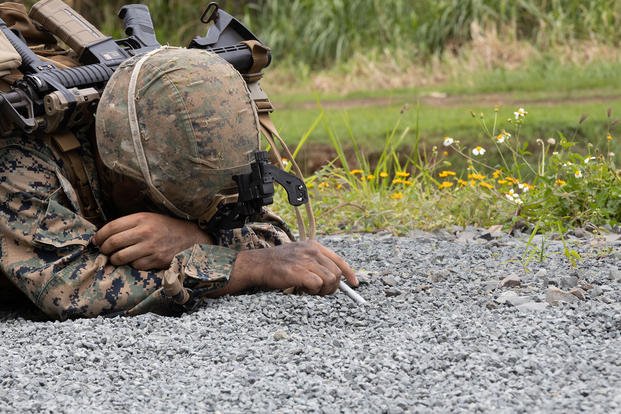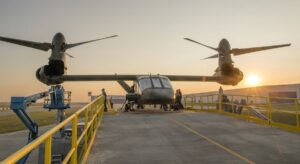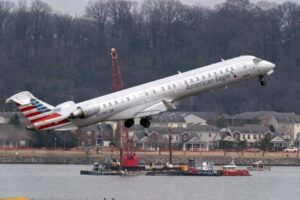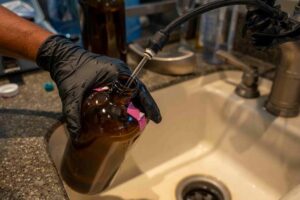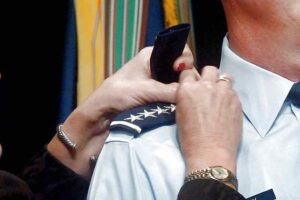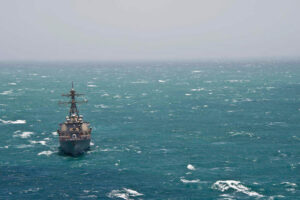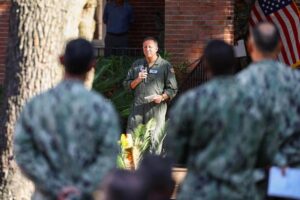Navy Proposes Enhanced Mine Warfare Training in the Hawaiian Islands
The U.S. Navy is planning to expand its mine warfare training in Hawaii as part of its efforts to renew its operating permit for training activities in waters around Hawaii and California. This initiative is detailed in the Navy’s environmental impact statement (EIS), which is currently open for public feedback and will be the focus of upcoming meetings in both states.
As the current federal permit for the Hawaii-California Training and Testing Study Area is set to expire in 2025, the Navy is required to submit an updated EIS for renewal. The proposal includes establishing new training ranges to help military personnel learn to detect, avoid, and neutralize ocean mines.
Proposed training sites in Hawaii include the Kalohi Channel, Pailolo Channel, Alalakeiki Channel, and areas around Kahoolawe and Kauai. Additionally, training is planned off Oahu at locations such as Barbers Point, Marine Corps Training Area Bellows, Ewa Beach, and Kaneohe Bay.
“We have a number of different mine warfare systems; some are aviation, some are surface, some are divers, some are unmanned systems, some are submarines,” said Alex Stone, HCTT EIS program manager. “So we have a whole suite of different mine warfare systems that the Navy uses. But for training, what it kind of looks like is placement of mine training shapes either on the sea floor or in the water column. And then, you know, the training is to, you know, locate the mine shapes.”
These “mine shapes” are dummy mines used to simulate real-world scenarios where service members must safely navigate or disable them.
The draft EIS outlines various training activities, including amphibious operations training, port defense, and submarine warfare exercises. These operations often involve the use of sonar, which has sparked environmental concerns due to its potential impact on marine life. The EIS provides data on sonar use, including restrictions aimed at protecting marine ecosystems.
Environmental considerations are a significant aspect of the Navy’s proposal, as past activities have drawn scrutiny over their ecological impact. Stone emphasized that the EIS incorporates the latest scientific research on marine life and reflects current military training requirements.
Although mine warfare training has been conducted in Hawaii previously, most Pacific training has occurred near California. “We’re not physically expanding the boundaries of the study area in Hawaii, but we are going to be doing more mine warfare-type training,” Stone explained.
The decision to increase training in Hawaii aligns with rising global interest in mine warfare, particularly as geopolitical tensions in regions like the Pacific escalate. The ongoing conflict in the Black Sea between Russia and Ukraine highlights the strategic importance of mines, which have become a focal point for military forces worldwide.
Increased activities in the Pacific, particularly China’s territorial assertiveness in the South China Sea and military maneuvers around Taiwan, further underscore the need for advanced mine warfare capabilities. The Chinese military’s emphasis on mine warfare, including large-scale exercises and significant investment in mine production, is noted in the context of global military strategies.
The U.S. Navy is also advancing its capabilities by planning to replace its minesweeper fleet and developing new systems like the Mining Expendable Delivery Unmanned Submarine Asset (MEDUSA) to enhance its operational effectiveness.
Public meetings regarding the Navy’s draft EIS will be held next month in Oahu and Kauai, with a virtual session also available. Interested parties are encouraged to submit questions by Jan. 15 and participate in the discussions.
- Honolulu: Jan. 15, Keehi Lagoon Memorial Weinberg Hall; open house from 4-7 p.m., presentation and comment session at 5 p.m.
- Lihue: Jan. 16, Kauai Veterans Center; open house from 4-7 p.m., presentation and comment session at 5 p.m.
- Virtual public meeting: Jan. 22, 3-4 p.m., via Zoom or by telephone.
Questions concerning the draft EIS will be accepted in advance through Jan. 15 via the question form on the project website, which also provides instructions for participating in the virtual public meeting.
“`

